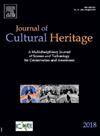文化遗产保护中的价值观念:对著名国际组织出版的基础资料的系统回顾
IF 3.3
2区 综合性期刊
0 ARCHAEOLOGY
引用次数: 0
摘要
本文系统地解决了在文化遗产保护领域中解释价值概念的不一致,正如在著名国际组织出版的基础资料中所观察到的那样。本研究的目的是(1)澄清价值概念是如何定义的,并绘制出公认的价值类型学和那些存在价值定义的类型学,以及(2)确定文化遗产保护的主要方法及其与价值概念的关系。对来自联合国教科文组织、ICOMOS、ICCROM、欧洲委员会和欧洲建筑师委员会的34份开创性文件进行了全面的内容分析,所有这些文件都明确定义了文化遗产背景下的“价值”。结果系统地突出了价值概念的复杂性——它的含义和范围,以及在分析的开创性文件中先前确定的文化遗产保护主要方法的代表。结果揭示了价值概念的定义和理解的实质性变化和演变,确定了超过151种不同的价值类型;然而,只有少数文化、历史、社会和审美价值在分析的来源中占主导地位。此外,该研究还确定了四种主要的文化遗产保护方法:基于物质的、基于价值的、生活遗产的和历史城市景观的。研究结果表明,这些方法的演变直接对应于价值概念化和运作方式的变化,特别是关于有形和无形价值之间的平衡以及不同利益相关者群体不断扩大的作用。该研究强调了在文化遗产保护话语中,关于价值概念的定义和价值分类一直缺乏共识。这种多样性提出了关于当前估值实践的一致性、包容性和文化适应性的关键问题。这篇论文并没有提出一个统一的模型,而是对制度和认识论框架进行了批判性的反思——这些框架是由著名的国际组织发表的基础资料,它们仍然在实践中作为识别和保护文化遗产价值的全球指南。此外,对文化遗产保护的四种主要方法的思想和原则的识别和审查,可以作为进一步的、更基于情境的价值概念分析的起点。这些见解旨在为未来关于重新定义价值概念的讨论提供信息——其在文化遗产政策文件中的意义和范围——超越僵化的类型学,走向更加动态、上下文敏感和包容的方法。本文章由计算机程序翻译,如有差异,请以英文原文为准。
The notion of value in cultural heritage preservation: A systematic review of foundational sources published by renowned international organisations
This paper systematically addresses the inconsistencies in interpreting the notion of value within the field of cultural heritage preservation, as observed in foundational sources published by renowned international organisations. The research aims (1) to clarify how the notion of value is defined and to map the recognised value typologies and those for which the definition exists, as well as (2) to identify the main approaches to cultural heritage preservation and their relationship to the notion of value. A comprehensive content analysis was conducted on a curated sample of 34 seminal documents sourced from UNESCO, ICOMOS, ICCROM, the Council of Europe, and the Architects’ Council of Europe, all of which explicitly define “value” in the context of cultural heritage. The results systematically highlight the complexity of the notion of value – its meaning and scope, as well as the representation of the previously identified main approaches to cultural heritage preservation within the analysed seminal documents. The results reveal substantial variation and evolution in the definition and understanding of the notion of value, with over 151 distinct value typologies identified; however, only a handful—cultural, historical, social, and aesthetic values—predominate across the analysed sources. Furthermore, the study identifies four main approaches to cultural heritage preservation: material-based, value-based, living heritage, and historic urban landscape. The findings demonstrate that the evolution of these approaches corresponds directly to changes in how values are conceptualised and operationalised, particularly regarding the balance between tangible and intangible values and the expanding role of different stakeholder groups. The study highlights a persistent lack of consensus regarding the definition of the notion of value and classification of values in cultural heritage preservation discourse. This multiplicity raises critical questions about the coherence, inclusivity, and cultural adaptability of current valuation practices. Rather than proposing a unified model, the paper offers a critical reflection on the institutional and epistemological frameworks – foundational sources published by renowned international organisations that still serve as a global guideline for identifying and preserving values of cultural heritage in practice. Moreover, the identification and examination of the ideas and principles of the four main approaches to cultural heritage preservation serve as a starting point for further, more context-based analysis of the notion of value. These insights aim to inform future discussions on redefining the notion of value – its meaning and scope in cultural heritage policy documents - moving beyond rigid typologies toward more dynamic, contextually sensitive, and inclusive approaches.
求助全文
通过发布文献求助,成功后即可免费获取论文全文。
去求助
来源期刊

Journal of Cultural Heritage
综合性期刊-材料科学:综合
CiteScore
6.80
自引率
9.70%
发文量
166
审稿时长
52 days
期刊介绍:
The Journal of Cultural Heritage publishes original papers which comprise previously unpublished data and present innovative methods concerning all aspects of science and technology of cultural heritage as well as interpretation and theoretical issues related to preservation.
 求助内容:
求助内容: 应助结果提醒方式:
应助结果提醒方式:


